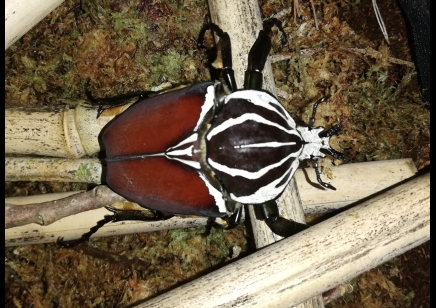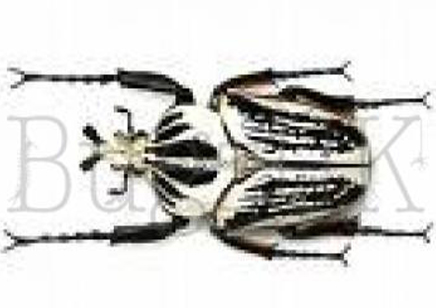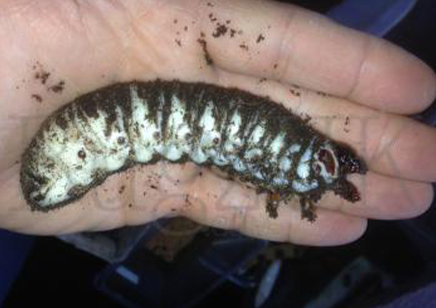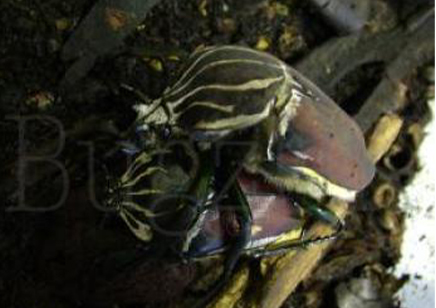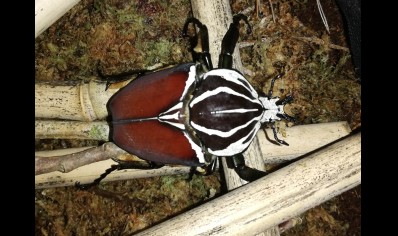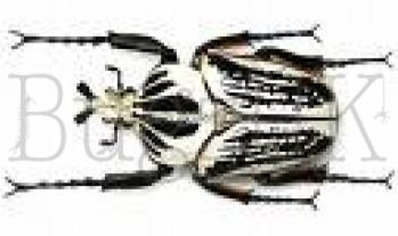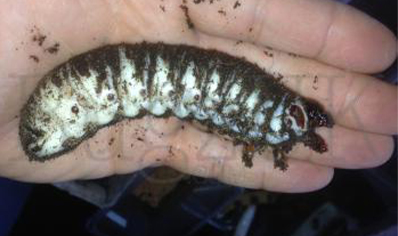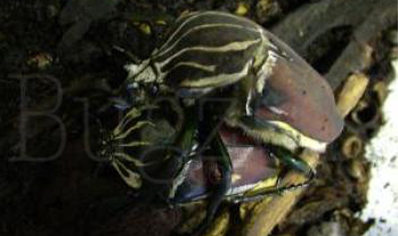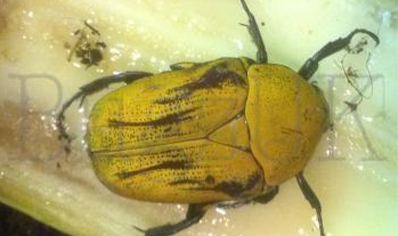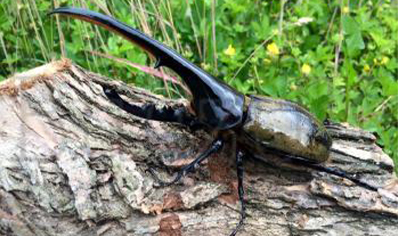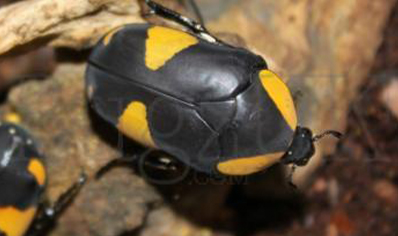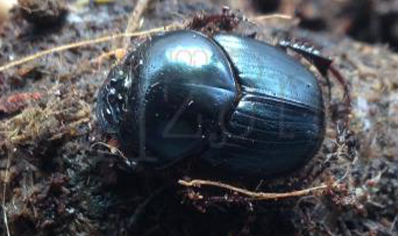Beetles: Goliathus Goliatus Male...3 left
Goliathus goliatus is one of the largest species of the genus Goliathus, with a body length of about 7 to 11cm in the males and about 6 to 8cm in the females.
Pronotum(thoracic shield) is mainly black, with whitish longitudinal stripes, while elytra are usually dark russet brown. This usual pattern may differ greatly in some subspecies and forms, especially where interbreeding has taken place in the wild
This species possess a large and membranous secondary pair of wings actually used for flying. When not in use, they are kept completely folded beneath the elytra. The head is whitish, with a black Y-shaped horn in males, used as a pry bar in battles with other males over feeding sites or mates. These beetles feed primarily on tree sap and fruits.
Taxonomic Classification
- Kingdom: Animalia
- Phylum: Arthropoda
- Class:
- Order:
- Family: Scarabaeidae
- Sub Family: Cetoniinae
- Genus: Goliathus
- Species: GOLIATUS
Order Now!
Minimum order £10 + Postal Charges
All payments are made through a secure payments system click here for more information.
Small grub
£0.00
Out of Stock
Medium grub
£0.00
Out of Stock
Large Grub
£0.00
Out of Stock
Adult Female
£0.00
Out of Stock
Adult Male
£79.99
Out of Stock
Care Sheet
Appearance
Pronotum(thoracic shield) is mainly black, with whitish longitudinal stripes, while elytra are usually dark russet brownLifecycle
From egg to beetle takes about 9 to 12 months depending on temperature and the adult beetles beetle will live for about three to four months
Housing
One pair of adult beetles can be housed in a plastic tank of about 30cm(L) x 20(W) x 60(H) .
Substrate
Substrate is made by mixing 80% peat or coir with 20% deciduous humous/leaf litter from your local woods (avoiding areas where fertilisers and weed killers etc are used ). The resultant mix should be moist not wet and should stay as a ball when cupped tightly in two hands but should not exude water when squeezed tightly
Place substrate mix in the tank to 50cm and push down very very firmly to pack it really tightly in the bottom, place 10cm more in and push down ,though not quite so firmly, then fill to a final substrate level of approx 30cm after the final mix is gently tamped down to get rid of air pockets.Place your branches etc for climbing on the top of the substrate and your set up is ready. they are very strong climbers and need a lot of space above the substrate, ideally in a netted cage
Temperature and humidity
The Beetles need a temperature of 24 to 28�C to mimic their normal life in the wild and benefit from a strong overhead light.
Food
Adult beetles eat tree sap which can be emulated using molasses or demerara sugar boiled in water and cooled, the resultant viscous liquid can be spooned ontp branches as food, they will also eat any kind of soft fruit, banana being a particularly favourite fruit.
Breeding
If you have a pair or more of beetles, they will often breed as soon as they are put together, males mating with different females. The females will burrow down into the substrate and will lay single eggs within the bottom 5 to 6cm of the substrate by compacting soil around the egg. The eggs will hatch and the small white grubs will start to feed on the humous within the substrate and move about. Unlike other fruit beetles, the grubs cannot live their life on humous in the substrate, they need to be removed and housded separately. you can sift through the substrate and collect the eggs / grubs which are likely to be at different stages, and the set up then can be remade for the adult beetles to continue laying
Keeping grubs
grubs should be housed separately as they are cannibalistic. Keep in a pot with a surface area approximately 3 times longer than the grub and the same in height....fill the tub with moist peat put in the grub and on a weekly basis feed it with as many Bakers moist dog food meat pellets as it will eat in a week. The pellet must be put at the bottom of the pot with the grub, and, at any sign of white mites, discard the whole substrate, brush off the grub and set up in new substrate
The grub will grow quickly to the size of your hand and when it starts to move around the top of its pot rather than the bottom, you need to put it into a much larger container with a substrate made up of a mix of 70% of moist peat with 30% playpit sand, with a netted top so that when the grub pupates, the mix will slowly dry out. After 3 months or so, when the substrate has completely dried out, drizzle water over the surface every day for several days until the new beetle emerges.......and start again

